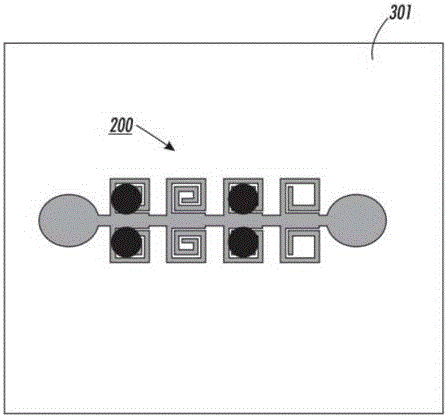Printing system architecture for encoding chip-less RFID tags in real time
An RFID tag and chipless technology, which is applied in the direction of recording carriers used in machines, printed circuits, printed circuit manufacturing, etc., can solve the problem of high cost
- Summary
- Abstract
- Description
- Claims
- Application Information
AI Technical Summary
Problems solved by technology
Method used
Image
Examples
Embodiment Construction
[0026] The present embodiment will now be described in detail, examples of which are illustrated in the accompanying drawings. Wherever possible, the same reference numbers are used in the figures to refer to the same or similar parts. It is to be understood that the structures depicted in the figures may include additional features not depicted for brevity and that the depicted structures may be eliminated or modified.
[0027]Notwithstanding that the numerical ranges and parameters setting forth the broad scope of the embodiments are approximations, the numerical values set forth in the specific examples are reported as precisely as possible. Any numerical value, however, will naturally contain certain errors necessarily resulting from the standard deviation found in its respective testing measurements. Moreover, all ranges disclosed herein are to be understood to include any and all of all subranges subsumed therein. For example, a range of "less than 10" may include an...
PUM
 Login to View More
Login to View More Abstract
Description
Claims
Application Information
 Login to View More
Login to View More - R&D
- Intellectual Property
- Life Sciences
- Materials
- Tech Scout
- Unparalleled Data Quality
- Higher Quality Content
- 60% Fewer Hallucinations
Browse by: Latest US Patents, China's latest patents, Technical Efficacy Thesaurus, Application Domain, Technology Topic, Popular Technical Reports.
© 2025 PatSnap. All rights reserved.Legal|Privacy policy|Modern Slavery Act Transparency Statement|Sitemap|About US| Contact US: help@patsnap.com



